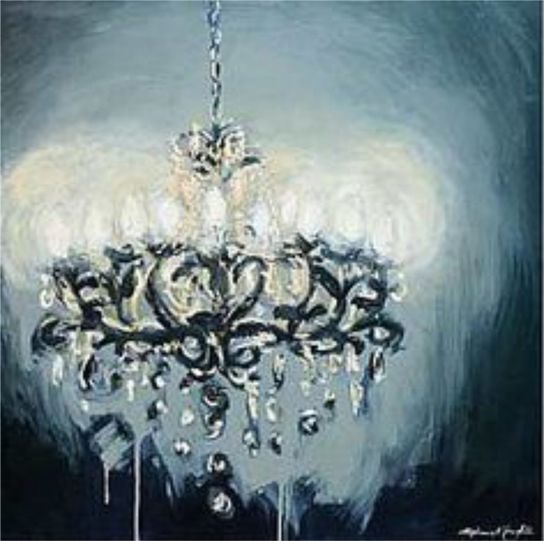I've just finished reading Sally Gardner's 'Invisible in a Bright Light.' It's a truly wonderful tale of mystery, intrigue, and the beautiful yet frightening collision of two worlds in 'the gutter of time.' The story unfurls at just the right pace, and it's been a while since I've met a cast of such fantastically idiosyncratic characters. I was also struck by the grounding of the tale in a curious setting - Copenhagen's Royal Opera House of the late 1800s. The descriptions of everything from the costume cupboards and dressing rooms, through to the enchanting dome which houses the exquisite chandelier, were so powerfully rendered that I truly believed that I was there:
"She slipped through the forbidden door into the realm of thick, red carpets where the walls were decorated with murals of fairytales. This was the part of the theatre that belonged to the audience. It would be inhabited by grand ladies in luxurious dresses with bustles, and trains that swished when they moved, and dainty shoes that a princesses might wear, their hair sparkling with gems."
And this got me thinking about what makes for a really vivid description of place in children's fiction. I realised that setting needn't be overly complicated or unusual for it to draw you in as a reader. After all, David Almond's wonderful 'Skellig' opens with a description of a dirty garage:
"We called it the garage because that's what the real estate agent, Mr. Stone, called it. It was more like a demolition site or a rubbish dump or like one of those ancient warehouses they keep pulling down at the wharf. Stone led us down the garden, tugged the door open, and shined his little flashlight into the gloom. We shoved our heads in at the doorway with him."
I read an interesting article in a literary magazine once, in which a publisher argued that a great setting should be viewed as character in itself - it should always add to, rather than detract from the story. I think this is something that both Sally Gardner and David Almond do wonderfully. In both their novels, which could't be more different, they give just enough away for us as readers to fill in the gaps, and the build the rest of the world in our heads, enabling the story to flow almost effortlessly through these structures that they've constructed.

